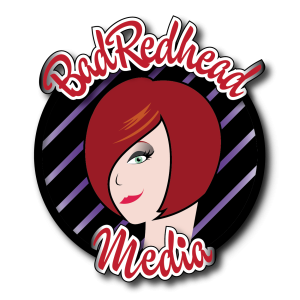This Is How to Sell Your Book in 20 Seconds by Guest Sharon Goldinger
Could You Sell Your Book in Twenty Seconds?
Picture this: You’re in an elevator, your book cupped in your hand, the title clearly visible to the other person in the elevator. While riding from floor 1 to floor 19, she asks, “What is From Fat to Fit about?
You respond: “You’ll be inspired by the amazing Community Meltdown, which motivated 1,000 people to have fun while losing 8,000 pounds in 8 weeks, and my personal story as I went from fat to fit and lost 62 pounds.”
When the elevator lands at her stop, she says, “Sounds great. I’ve got to get a copy.”
Can you sell your book in 20 seconds? Can you describe the benefits to your readers in 30 words? Can you provide solutions to your readers’ problems in the time it takes an elevator to go 18 floors?
Sell in Short Bursts
When the average attention span is as short as eight seconds, you don’t have much time to educate someone about your book and why he or she needs it.
The Non-Fiction Sell
So, how do you create a compelling and informative elevator speech for your book–and not use more than a sentence or two? Start with these steps:
- Define who your readers are (males, females, twenty-somethings, baby boomers, Democrats, Republicans, etc.).
- Describe at least 3 benefits that your readers will gain from reading your book (these are verbs–for example, discover the secrets to _____________, learn how to ____________).
- Determine the three problems that your readers have and the solutions that your book provides.
Now review the answers to 1, 2, and 3 and create a 25-word elevator speech. Read it to your publishing colleagues (your editor, your designer, your marketing department) and see if they understand what you’re selling. If not, create a new 25-word elevator speech from the information above, and try it again.
Do this until you have one that works, and then memorize it.
The Fiction Sell
If your book is fiction, you still need to identify your readers (step #1). However, the benefits in step #2 are a bit different: What will the reader experience: passion, adventure, danger?
And step #3 for fiction needs to be a compelling, tantalizing description (a carrot) to get the reader to say “I want to read that.”
Selling Examples
In sales, it’s as important to know when not to talk as it is to know when to talk.
Give your 25-word elevator speech and then be quiet and wait for a response. If the person wants more information, you should have a 50-word speech that follows up what you’ve said and provides additional benefits (more verbs), features (nouns–for example, 100 ways to sell your house), and solutions.
Nonfiction
The Smart Mother’s Guide to a Better Pregnancy–It helps expectant women achieve a healthy pregnancy by learning how to recognize high-risk conditions and avoid inherent weaknesses in our healthcare system.
Saddle Up Your Own White Horse–It’s a refreshing look at how women can create the life they want, offering work-life strategies that provide the balance between being a feminist and a doormat.
Fiction
(from Parade magazine)
The Vacationers–To escape tensions at home, the dysfunctional clan at the center of Emma Straub’s smart new novel head to Mallorca for a two-week stay–and pack their problems along with them.
The Smoke at Dawn–Civil War history fiends will enjoy this book, which is set in the last stage of the great conflict and culminates in the Battle of Chattanooga.
As these examples show, a single sentence can pack a punch. And creating a compelling elevator speech will help keep your sales on an upward trajectory.
rocket
THE GIVEAWAY
Sharon is giving away a 30-minute one-on-one consultation about self-publishing.
(a $150 value)

Want to win this giveaway? Simply leave a comment WHY below!
All comments must be left prior to midnight on Monday, May 13th, 2019 in order to be eligible to win. Winners for the week announced on Tuesday, May 14th.
Good luck!
Sharon Goldinger | PeopleSpeak
For a more detailed plan on developing your book marketing, purchase Rachel’s new book,
The BadRedhead Media 30-Day Book Marketing Challenge now on Amazon!
Already a 5-Star Reader’s Favorite!
Have you signed up for my newsletter yet?




The elevator pitch is soooooo hard. Mine is “well it’s kind of err sort of errr maybe a bit like errr” – would live live love some help!!!
I have a hard time with the elevator pitch, but I am working on it! Posts like this one help me break it down further.
I love elevator pitches–they nicely lend themselves to tweets and Facebook posts–but I’ve been struggling to grasp the finer points of creating them. This post has been very helpful–and I like the idea of having a 50 word follow up, too!
Excellent! You explained this so well and The examples are so helpful. Still, I find a short elevator pitch hard to write. As Mark Twain said, “I didn’t have time to write a short letter, so I wrote a long one instead!” Thank you.
Sharon,
Great post. I found out purely by accident how easy it is to see a book in 20 seconds (or less). I took my favorite author’s book (I don’t have a book of my own as of yer) to a musical in Charleston, South Carolina. We had a front-row seat and extra time before the show began. I set the book on the stage and started taking photos in various locations on stage. What followed was astounding; many people wanted to know about the book. I passed the book around, and everyone that read the back cover of the book wrote the name of the book and author down. Others asked me the name of the book and author and wrote the book information down. It was electrifying.
So, yes, from experience I believe books could be sold in under twenty minutes. Most authors have street teams which could do so much for the authors book sales by carrying an ARC with them. Everyone wants to know what everyone is reading, and are not timid to ask outright.
Sincerely,
Donna
I would love help fine tuning what my pitch is – to go to Amazon or to see someone in the street and be able to say what my book is, exactly, in 20 words. To feel confident in what I’m going to say. Sometimes stuck in who my book isn’t for that I forget who it IS for and how to tell them. How to be the person who believes in their own product when they speak to others about it.
The elevator pitch is the absolute hardest thing for me. But I do know how essential it is!
Great post! I myself have trouble with the ole elevator pitch so reading this was enlightening and refreshing. It doesn’t say not to panic or freak out but more or less plan before hand so you don’t panic or freak out. These 20 secs could make or break your pitch. Very well put together!
I’ve read a lot of articles about how to craft an elevator pitch. This one does the best job of conveying what needs to be communicated. It’ also gives an easy method to craft a pitch, whether fiction and nonfiction. Thanks so much for writing this article! I’m sure I won’t be the only one helped by it.
Sincerely,
Dana Lemaster
I definitely haven’t quite “nailed” my own elevator pitches for my books, but I’ve been on the receiving end of some horribly stilted conversations at writing conferences where other authors really struggle to be concise and compelling. Thanks for the great reminder how important this is!